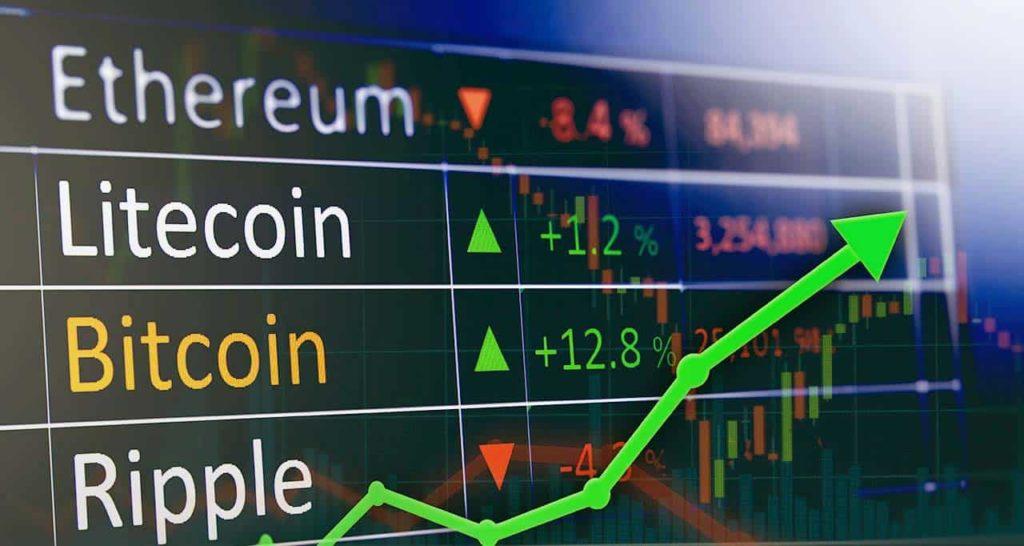There are many differences in trading these different markets. While traders use similar strategies and principles when trading cryptocurrency, the technical analysis, market regulations, ethics, user/investor base, spreads, and volatility all are vastly different. The main underlying free market principles, however, are the same. This means that while the markets do differ, they also work on a social consensus level of finding a market value of an asset. These principles are actually the same in more than just these markets but govern most capitalist markets in general.
For example, property markets also follow a general social consensus principle. This is why a house in Florida is priced differently to one in California, even if they have the same exact specifications. The social consensus of those two areas is vastly different, based on location, climate, the surrounding neighborhood, safety, etc. On a smaller level, a house in Beverly Hills will likely be valued much higher than a similar property in other parts of LA. This is because the social consensus for the asset in Beverly Hills has rendered a higher market value.
These principles are what govern any market: Forex, the stock markets, commodities, and, now, cryptocurrency. This means that a trader in all markets will use these principles to identify deals and valuations while looking to invest in assets that are undervalued or growing in valuation due to these principles. The differences in these markets also make the sector vastly different and riskier than conventional markets.
Here are a few of those key differences and why they matter.
The biggest difference, in our opinion, is in regulation. Cryptocurrency is almost completely unregulated and is actually regulation-resistant as part of its core characteristics. That means that while a specific government can ban, regulate or attempt to govern cryptocurrency markets – or rather, access to those markets – the market as a whole can’t be regulated. This is because cryptocurrencies are actually digital assets that exist outside of the reach of any one government. When it comes to a conventional market, the market is regulated by the country where the exchange is operated.
For example, all companies listed and traded on the NYSE (New York Stock Exchange) are regulated by the SEC (Securities Exchange Commission) and American federal law. Cryptocurrencies don’t exist on a centralized exchange and thus could simply move to an out-of-jurisdiction exchange within seconds. For a conventional company, that would mean moving a head office and staff. Cryptocurrencies have no head office, staff, or assets in the physical world to be tied to a jurisdiction, in most cases. That means for regulations to truly be implemented, it would require complete global consensus.
Unsurprisingly, global consensus can’t be reached on much bigger and more important issues, like global warming, war, exploitation of child workers, etc. So, it is highly improbable that regulations will ever be implemented to the cryptocurrency markets on a global scale. This means that, unlike conventional markets, traders have fewer rules to work within and fewer requirements to keep them honest. Additionally, it means markets are more capitalist in nature and operate on “survival of the fittest” rules. Furthermore, it means that investors can actually move, hide and operate outside of the reach of authorities.
For example, when China banned cryptocurrency trading, the major Chinese exchanges simply moved to Hong Kong and Japan. This meant that Chinese traders could continue to trade with relatively little effect of that regulation on their ability to do so. Similarly, many other countries are calling for regulations. However, until the entire world makes a complete consensus, regulations are impossible.
Trading Ethics
This brings us to the second major point, trading ethics because the regulations are non-existent and very different in these markets.
Pump and Dumps
For example, if a trader were to buy a stock, pump it until it reached a high, dump it at that high and rebuy it at the bottom, that would be price manipulation. He would lose his brokerage license, get fined and possibly face jail time. In the crypto markets, such pump-and-dumps are used daily and are actually a popular strategy.
Insider Trading
When it comes to insider trading in the conventional markets, a broker or investor can’t use insider knowledge to profit outside of a 24-hour period in the US. This means that if you were an accountant for Facebook and you knew, based on insider knowledge, that it was going to have a bad quarter, you couldn’t begin shorting it on the market until that information was made public or until 24 hours maximum prior to that information going public. If you did, you could be charged with insider trading. In cryptocurrency, no such rules exist. So, if someone knew that a major fork was about to be announced in two weeks, he or she could buy as much of that coin as they wanted, as early as they wanted. Then, when the general public was informed of that fork and the price shot up, they would instantly profit.
Another example is if one of us was to work on an ICO and knew that a security problem existed in the code or that a specific road map goal couldn’t be met. We could dump our holding at little loss and when the information went public, we would not be affected. This form of insider trading is rampant in the cryptocurrency sector and many of the biggest players (whales) communicate amongst themselves to ensure they aren’t affected by bad news, while they profit the most from good news.
A great example of this is when Korean authorities banned cryptocurrency in January 2018. Members of the government profited by insider trading, as they knew that announcement was about to be made.
Wash Trading
A final common practice that would be unethical and illegal in other markets is “wash trading.” Wash trading is when one buys or sells to themselves in order to make the market look like it is moving in a specific direction.
For example, let’s say you have a coin worth $10. You then sell it to yourself for $8, then sell it back to yourself again for $4. By doing so, you have effectively created the illusion that the market value is falling and many people will begin to sell for cheap. You could then buy coins far under market value. On the other hand, If you were to sell that same $10 coin to yourself for $20, you could then sell more coins to other people for $20, as they would think the price is surging. This would be illegal and amounts to price manipulation in conventional markets. However, is a common practice in the cryptocurrency markets.
All these forms of manipulation are used and, though completely unethical and illegal in the stock markets, they are perfectly legal in the wild west style cryptocurrency markets – or at least, technically not illegal. Because few people can spot these types of trades, the average investor is susceptible to loss if they don’t have professional market experience or stay informed through publications like CoinBeat that employs specialists to identify these patterns.
Spreads/Volatility
This is another major difference in the cryptocurrency sector. Volatility is extreme in comparison and can make fluctuations in price of 20-30% a day very common. This means a trader can make a lot of money while investors can be left in very risky positions.
In comparison, we would say the crypto markets are at least 10x-20x more volatile than the stock markets, 50x-100x more volatile than the Forex markets and 1000x more volatile than the bond markets. These are our opinions, of course, and some people may say these numbers are either under or over the actual volatility rates in comparison. This means, however, that a lot of money can be made as volatility is what makes traders profits.
For example, the following chart is a single day in the pricing of Bitcoin. As you can see, the volatility saw the price move through a plethora of positions. If a trader was to take advantage of all of them, he could have easily made 10% returns with a mixture of long and short positions closed over the day. Additionally, unlike the stock market where a single stock rarely trades beyond a 1-2% spread on a day, cryptocurrencies can trade in a 20% or more spread and it is actually even more volatile for smaller coins with less market cap. This is due to a mixture of price manipulation and the fact that most cryptocurrencies are still attempting to define their values.
User/Investor Base
The final difference worth touching upon is the user/investor base of cryptocurrency markets.
In the conventional markets, investors are generally higher net worth individuals and traders are professionals. The investors are far less attached to these investments as 99% of the time they hire professional money market managers to oversee their portfolios. In the cryptocurrency markets, 99% of investors think they are the professionals and are also much less wealthy and thus at risk of “panic selling” and “fomo” (fear of missing out) buying. This makes the swings and volatility much more pronounced and the speculative nature of the markets far more emotionally-based than analysis-based.
 Unfortunately, the market is full of so-called pundits who don’t understand the true market theory but readily advise newbies to the sector. These newbies then pass on the advice and the market becomes overbought and bubbles form. The main issue is that the market is growing so rapidly as new users are bringing vast amounts of capital to the sector and thus driving up prices even though supply does not match the rising demand.
Unfortunately, the market is full of so-called pundits who don’t understand the true market theory but readily advise newbies to the sector. These newbies then pass on the advice and the market becomes overbought and bubbles form. The main issue is that the market is growing so rapidly as new users are bringing vast amounts of capital to the sector and thus driving up prices even though supply does not match the rising demand.
Furthermore, a few professional and accountable services exist for investors, many are left attempting to manage assets they don’t understand, in markets that are highly susceptible to manipulation and price bubbles. Publications like CoinBeat are slowly filling this role. However, more support in the industry is needed and few people understand the risks they face by managing their own portfolios in such a marketplace.
Getting Help From a Professional
CoinBeat is a publication that connects investors with professional traders, writers, and analysts in the cryptocurrency sector. Subscribing to CoinBeat, investors can copy and mimic the positions, portfolios, and trades of professional cryptocurrency traders who we have done our due diligence to vet. This equates to a much safer and more professional approach to investing in the sector and means that so-called pundits will no longer be the only voice spurring on these unrealistic and unethical investment strategies.
Knowledge is power in any market and publications like this and more professional level support in the sector will eventually quell the psychological impact of amateur traders and over-exposed investors in the markets.
These are just a few of the major differences. Others include the lack of market history, the inability for technical analysis, and the lack of accountability by the ICOs and cryptocurrencies themselves. In simple terms, cryptocurrency is the “wild west,” and anything goes. Investors should know these facts and only risk what they could afford to lose. Additionally, using a professional in the market can help hedge against and reduce risks greatly.
For those looking to capitalize however a great place to start is CoinBeat, make sure you subscribe to our daily and weekly market recaps and check out our tips from pro traders section.
Follow CoinBeat on Facebook, Twitter & Telegram
Subscribe to our CoinBeat Newsletter
Submit an article to CoinBeat
View live Marketcap Prices here







Comments